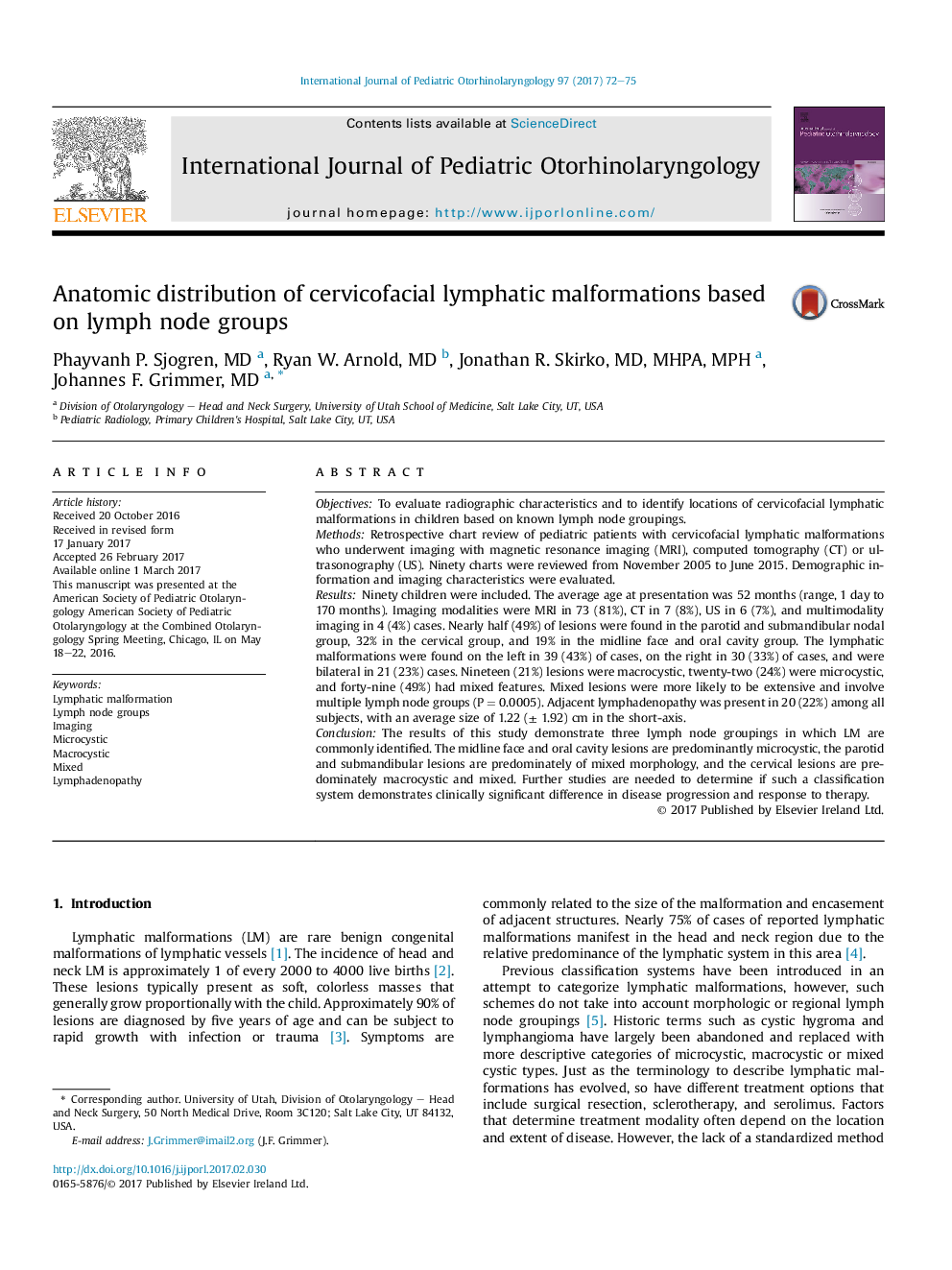| کد مقاله | کد نشریه | سال انتشار | مقاله انگلیسی | نسخه تمام متن |
|---|---|---|---|---|
| 5714887 | 1605971 | 2017 | 4 صفحه PDF | دانلود رایگان |
ObjectivesTo evaluate radiographic characteristics and to identify locations of cervicofacial lymphatic malformations in children based on known lymph node groupings.MethodsRetrospective chart review of pediatric patients with cervicofacial lymphatic malformations who underwent imaging with magnetic resonance imaging (MRI), computed tomography (CT) or ultrasonography (US). Ninety charts were reviewed from November 2005 to June 2015. Demographic information and imaging characteristics were evaluated.ResultsNinety children were included. The average age at presentation was 52 months (range, 1 day to 170 months). Imaging modalities were MRI in 73 (81%), CT in 7 (8%), US in 6 (7%), and multimodality imaging in 4 (4%) cases. Nearly half (49%) of lesions were found in the parotid and submandibular nodal group, 32% in the cervical group, and 19% in the midline face and oral cavity group. The lymphatic malformations were found on the left in 39 (43%) of cases, on the right in 30 (33%) of cases, and were bilateral in 21 (23%) cases. Nineteen (21%) lesions were macrocystic, twenty-two (24%) were microcystic, and forty-nine (49%) had mixed features. Mixed lesions were more likely to be extensive and involve multiple lymph node groups (P = 0.0005). Adjacent lymphadenopathy was present in 20 (22%) among all subjects, with an average size of 1.22 (± 1.92) cm in the short-axis.ConclusionThe results of this study demonstrate three lymph node groupings in which LM are commonly identified. The midline face and oral cavity lesions are predominantly microcystic, the parotid and submandibular lesions are predominately of mixed morphology, and the cervical lesions are predominately macrocystic and mixed. Further studies are needed to determine if such a classification system demonstrates clinically significant difference in disease progression and response to therapy.
Journal: International Journal of Pediatric Otorhinolaryngology - Volume 97, June 2017, Pages 72-75
